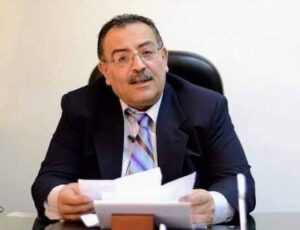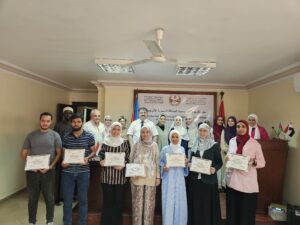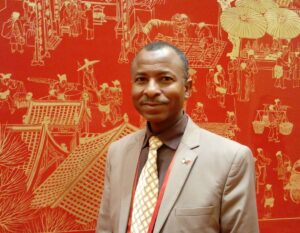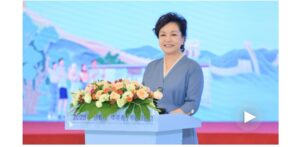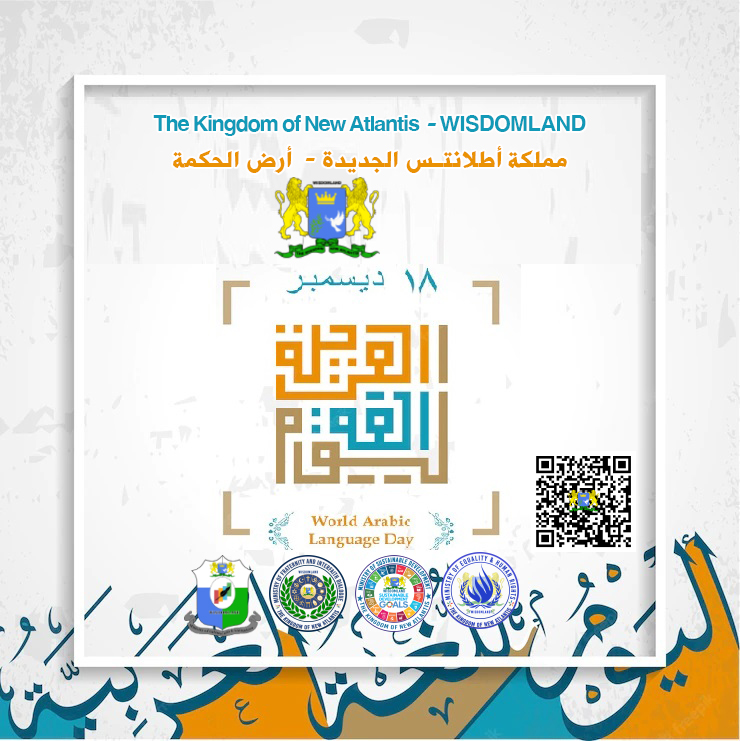
The Arabic language is one of the pillars of the cultural diversity of humanity. It is one of the most widespread and used languages in the world, as it is spoken daily by more than 400 million people
Arabic speakers are distributed between the Arab region and many other neighboring regions, such as Turkey, Chad, Mali, Senegal, and Eritrea, as Arabic is of utmost importance to Muslims, as it is a sacred language (the language of the Qur’an), and prayer (and other acts of worship) in Islam is only done by mastering some of its words. Arabic is also a major liturgical language for a number of Christian churches in the Arab region, as many of the most important Jewish religious and intellectual works of the Middle Ages were written in it (1) .
The Arabic language allows entry to a world full of diversity in all its forms and images, including the diversity of origins, stripes, and beliefs. Excluding geometry, poetry, philosophy and singing. Arabic prevailed for centuries of its history as the language of politics, science and literature, and it influenced directly or indirectly many other languages in the Islamic world, such as: Turkish, Persian, Kurdish, Urdu, Malay, Indonesian, Albanian and some other African languages such as Hausa and Swahili, and some European languages, especially the Mediterranean ones. such as Spanish, Portuguese, Maltese and Sicilian.
In addition, it represented a catalyst for the production and dissemination of knowledge, and helped transfer Greek and Roman scientific and philosophical knowledge to Europe in the Renaissance. It also made it possible to establish dialogue between cultures along the land and sea routes of the Silk Road from the coasts of India to the Horn of Africa.
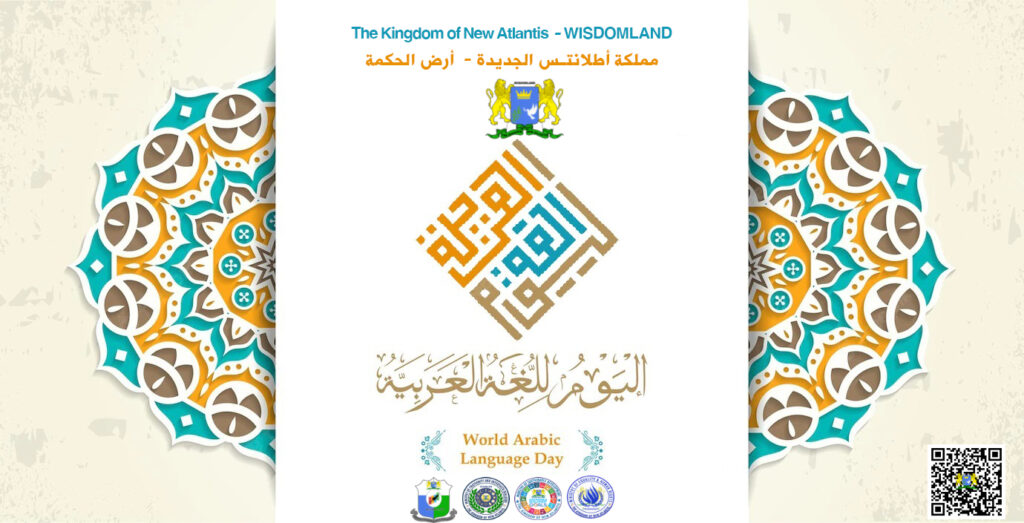
In support of and promotion of multilingualism and multiculturalism in the United Nations, the United Nations Department of Global Communication — formerly known as the Department of Public Information — adopted a resolution on the eve of International Mother Language Day to celebrate each of the six official languages of the United Nations. Accordingly, it was decided to celebrate the Arabic language on December 18, being the day on which General Assembly Resolution 3190 (XXVIII) of December 18, 1973 was passed, concerned with the inclusion of the Arabic language among the official and working languages of the United Nations.
The purpose of this day is to raise awareness of the history, culture and development of the language through the preparation of a program of activities and special events.
Celebration of the year 2022
Celebration of the United Nations Educational, Scientific and Cultural Organization – UNESCO / Paris
The theme of the celebration is “The contribution of the Arabic language to human civilization and culture.”
UNESCO will highlight the abundant contributions of the Arabic language to enriching the cultural and linguistic diversity of humanity, as well as its contribution to the production of knowledge, through the theme of this year’s celebration. On the occasion of the celebration of the World Arabic Language Day 2022, UNESCO is organizing a series of panel discussions and cultural events on December 16 at the organization’s headquarters in Paris.
More details about the ceremony
Permanent headquarters events in New York
Under the auspices of the Permanent Mission of the Kingdom of Saudi Arabia : Celebration of the International Day of the Arabic Language at the United Nations
The Arabic language at the United Nations: the 50-year march
Delegates Guest Room, United Nations Headquarters in New York
Monday and Tuesday 19-20 December 2022
- Advance registration and reservation link
- Concert program (available in Arabic and English )
An interactive event entitled
“Speak to me in Arabic”
sponsored by the Arab Club of the United Nations
Tuesday 20 December 2022
The United Nations and Multilingualism
Multilingualism, as an essential element of harmonious communication between peoples, is of very special importance to the United Nations Organization. While it encourages tolerance, it also ensures the effective and increased participation of all in the functioning of the Organization, as well as greater effectiveness, better results and greater participation. Multilingualism should be preserved and encouraged by various actions within the United Nations system, in a spirit of engagement and communication
The balance between the six official languages, ie English, Arabic, Chinese, Spanish, French and Russian, with the use of English and French for daily professional correspondence, was a preoccupation of all Secretaries-General. Several measures have been taken, from 1946 to the present day, to promote the use of official languages so that the United Nations and its goals and work are understood by the widest possible public.
English, Arabic, Chinese, Spanish, French and Russian are the six official languages of the United Nations. English and French are the working languages of the United Nations Secretariat ( Resolution 2 (First) of February 1, 1946).
The problem of multilingualism should be viewed from different angles, particularly the internal and external communication angles. Internal communication takes place within the organization, whether it is formal communication between member states and all the actors involved in the work of the United Nations, or communication between member states and the Secretary-General of the United Nations. It entails distinguishing between working and official languages. External communication, aimed at a wider audience, could include languages other than the official languages, as well as the question of the media used to disseminate United Nations messages. Finally, it is necessary, in order to promote all aspects of multilingualism, to think independently of the question of human resources
The Department of Public Information aims, inter alia, to make the ideals and messages of the United Nations known to the whole world and to make people understand them in order to gain support for the Organization, through the main media of the press, non-governmental organizations and educational institutions. To this end, you should ensure that your information and communication materials are distributed as widely as possible and at the most appropriate time. Therefore, the Department regularly seeks to expand the global audience for its products and activities, including television and radio programmes, the website, the network of United Nations information centres, and the guided visit programs available at the main offices.
Further information on the United Nations and multilingualism can be found on the dedicated page of the Secretary-General’s website
Language days
- March 20 – French Language Day (International Day of La Francophonie)
- April 20 – Chinese Language Day (in memory of Sang Jie, founder of the Chinese alphabet)
- April 23 – English Language Day (anniversary of the death of English writer William Shakespeare)
- June 6 – Russian Language Day (birth anniversary of Russian poet Alexander Pushkin)
- October 12 – Spanish Language Day (Hispanic Culture Day)
- 18 December – Arabic Language Day (the day Arabic was introduced into the official languages of the United Nations)
More than twenty years of leadership (1998 – 2018)
Such as the launch of the experimental broadcast of the United Nations Arabic Portal on the Internet , among other things, it represented a real anticipation of the future horizon of information and communication technology, which was destined to change the traditional way of dealing with and delivering information. The site was launched in an official ceremony on the thirteenth of November 1998, thus starting the United Nations in providing distinguished information services to Arabic speakers.
During these years, the Arabic website of the United Nations Organization was able to get a lot closer to its most prominent goal of spreading the lofty message of the United Nations and delivering it – and related information and knowledge – to Arabic readers.
Despite the difficulties that surrounded the work to achieve this goal, due to the limited technology available for the Arabic script at the beginning of the information and communication revolution, the site was able to face many updates and overcome many difficulties, and the effort resulted in the Arabic site of the United Nations becoming an important knowledge portal The information is presented in a gray dress that is not devoid of innovation and innovation.
The United Nations Arabic website started with a few pages of simple and limited technology, but it has been expanding and developing on both the material and technical levels. The amazing response to the site and the services it provides was a great moral support factor, and an active encouragement in always pushing the site for the better. Within one decade, the United Nations Arabic website witnessed steady growth at the level of material and superior development at the level of technology.
The few and simple pages with which the site was launched in November 1998, and the rather modest material it contained, increased over the days to include hundreds of pages, which are increasing day by day, to include all activities and aspects of the work of the United Nations, its agencies and organizations, and this was also accompanied by an abundance of material The introduction and comprehensiveness of the content in terms of presenting what is new and meeting the needs, while ensuring its compatibility with the highest professional standards.
With regard to development at the technical level, the Arabic site of the United Nations, from the beginning, had a foothold in the technical leadership in terms of dealing with the Arabic script. The Arab website of the United Nations was one of the leading Arab websites on the Internet at the time, which relied on the use of electronic typography in displaying its material, instead of the then common use of scanning texts and displaying them in images. The site is now presenting its pages according to designs that use the finest technologies available in the field of information technology, taking into account – among other things – facilitating ways for people with special needs and people with disabilities to access the available material.



